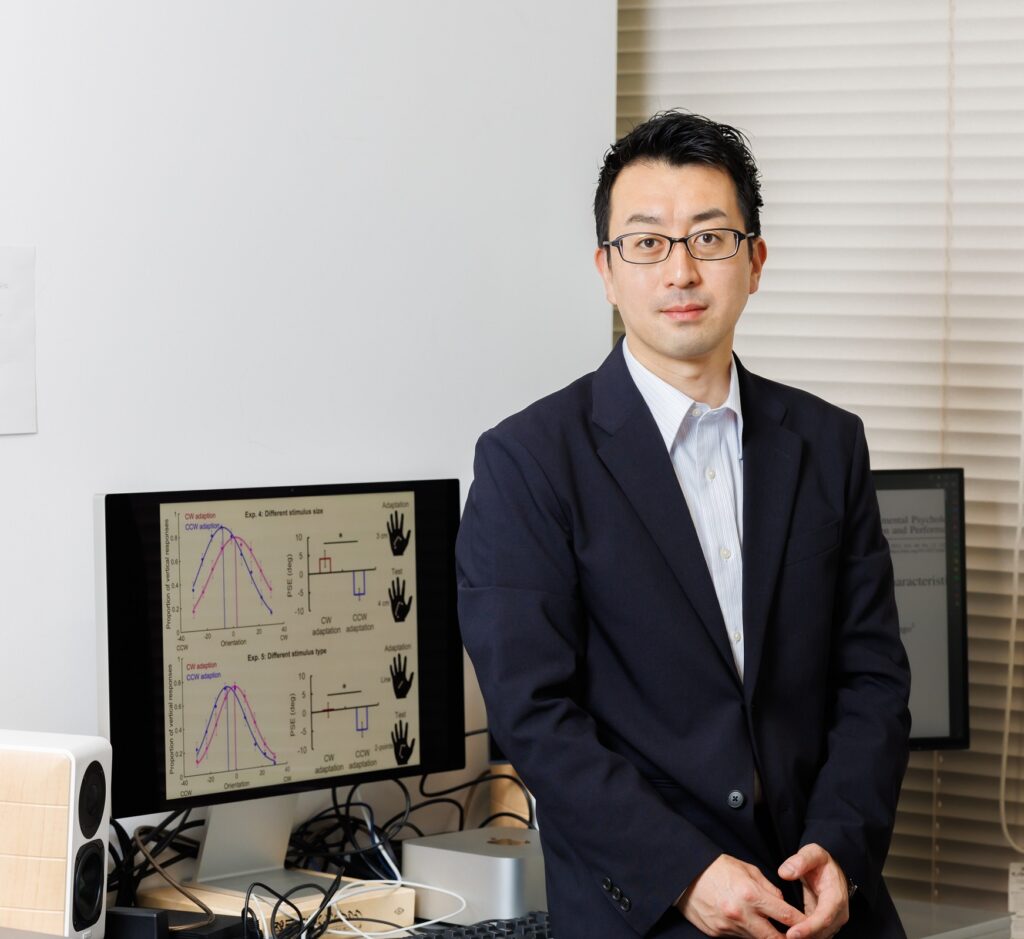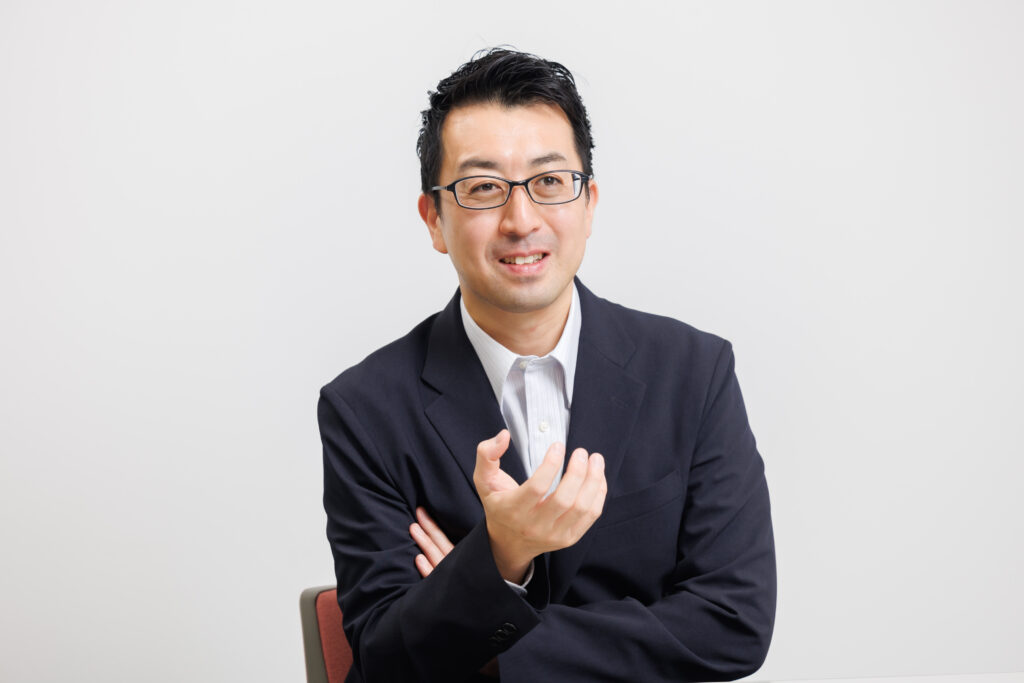
Professor Souta Hidaka from the Faculty of Human Sciences conducts research on the mechanisms of the mind from human perception and cognition, focusing on aspects such as seeing and hearing. He talks about the fun of research using experimental psychology techniques, the discovery of light and sound illusions through experiments, diversity in perception and cognition, and other related topics.
To recognize an object seen by the eyes as a three-dimensional image with height and depth, light information entering the eyes needs to be interpreted and converted during transmission from the retina to the brain.
All senses—seeing, hearing, touching, smelling, and tasting—go through various forms of processing in the brain before we can experience them. Perceptual psychology and cognitive psychology are fields which study these processes as part of understanding how the mind works.
Forming illusions where seeing and hearing interacts

In my research, I use experimental psychology techniques to visualize the mechanisms of the mind and understand its processes through experiments. For example, in an experiment, subjects sit in front of a computer and are shown pictures of human faces, drawings of animals, and other various images. Later, we add in an equal number of additional images, and the participants are shown each image in turn to determine if they were part of the original set.
Using the data collected from the rate of correct answers we can explore the characteristics of human memory. While psychology is widely known for clinical psychology, which aims to help people with mental issues, it actually coexists with fundamental psychological research areas.
My research has revealed that illusions where seeing and hearing interacts can occur when both senses are stimulated at the same time.
In our experiments, participants are shown a stationary flashing light on a monitor while receiving sounds perceived as moving horizontally, by alternating sound presentations to their left and right ears. We found that this auditory motion perception induced the illusory perception as the stationary light moving left and right. This phenomenon only occurred when the flashing light was placed at the periphery of their field of vision, and not in the center.
From the results, we believe there is a mechanism that uses sounds to help perceive movement when visual information alone is ambiguous. These illusions are a way for us to examine a part of the transformation process of our perception that usually takes place within the human brain.
Illusions are widely used in our lives, from road signs that appear three-dimensional to prompt drivers to slow down, to eyeshadow that creates the illusion of bigger eyes. I think that the illusions I discovered may have applications in virtual reality technology and in attractions at amusement facilities.
Highlighting individual differences in perception and cognition
In my classes, I make a point of conveying the diversity of perception and cognition to students. I often let them experience illusions during classes, and there are always be some students who claim that they don’t perceive the illusion. In the world of psychology, it is well known that, even at the basic level of perception and cognition, individuals differ in how they sense things.
We can consider that such differences affect our ways of thinking and preferences. I believe that this knowledge is crucial from the perspective of promoting our society as permissible with recognition and acceptance of individual differences.
Recently, I have been researching the traits associated with developmental disorders. It is often pointed out that people with higher levels of the traits have a particular sensory characteristics, such as hypersensitivity to loud sounds. By understanding these sensory characteristics, we can develop practical interventions for the daily lives of these people.
Research related to human perception and cognition is also being carried out in the fields of medicine and engineering, and I hope to broaden my horizons through collaborating with researchers in various disciplines.
The book I recommend
“Vision: A Computational Investigation into the Human Representation and Processing of Visual Information”
by David Marr, Japanese translation by Toshio Inui and Hiroshi Ando, Sangyo Tosho Publishing

Authored by a neuroscientist, this book advocates a perspective that human perception and cognition are information processing mechanisms. When I first read it as an undergraduate student, I found it was so difficult that I asked a graduate student for help. Despite the complexity, I was fascinated by the content and it led me to my research today.
-
Souta Hidaka
- Professor
Department of Psychology
Faculty of Human Sciences
- Professor
-
Graduated from the Department of Psychology, College of Arts, Rikkyo University, and received his Ph.D. in Literature at Tohoku University’s Graduate School of Arts and Letters. Took on several positions—such as research fellow at Japan Society for the Promotion of Science; assistant professor, associate professor, and professor at the Department of Psychology, College of Contemporary Psychology, Rikkyo University; and visiting researcher at Birkbeck, University of London—before assuming his current position in 2023.
- Department of Psychology
Interviewed: May 2023